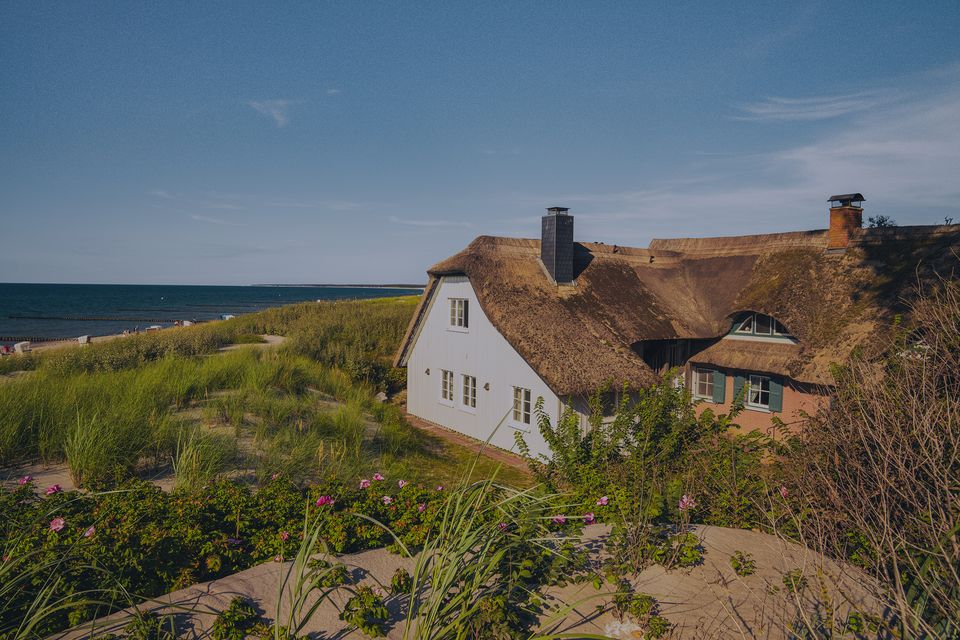Rügen and its white chalk cliffs
Rügen is the largest – and, in the minds of many, the most beautiful – of Germany’s islands, with its endless pristine beaches of soft sand. What’s more, it is easy to get to by rail, bus or car. The island is best known for its white chalk cliffs, perhaps most famously depicted in ‘White Chalk Cliffs on Rügen’ by the 19th-century German Romantic landscape painter Caspar David Friedrich. Not that you’ll be able to find the exact landscape shown in the painting – it has long since crumbled away and fallen into the sea. This ongoing process of erosion is why you should heed the safety signs and stay well back from the cliff edge. We recommend you take the clifftop path from Sassnitz to Lohme, where you can enjoy magnificent views of the chalk coastline and its highest elevation, Königsstuhl (King’s Seat), from five lookout points along the way.
The island’s many other attractions include the historic Seebrücke pier in Sellin, Jasmund National Park with its ancient, UNESCO World Heritage beech forests, Cape Arkona, and the Störtebeker Festival, an open-air theatrical re-enactment of the exploits of the infamous 14th-century pirate Störtebeker. If you like your fun a little darker and more mystical, then a trip to the ruins of Dwasieden Castle, the bizarrely stunted beeches of the Hexenwald (‘Witches’ Wood’), and the island’s various Stone Age burial mounds may be just the thing for you.
Rügen also boasts a wealth of scenic cycling tracks – perfect if you want to combine sightseeing with a good workout. Or for a more leisurely approach, we recommend a steam train tour of the southwestern part of the island on ‘Rasender Roland’, Germany’s oldest narrow-gauge railway, stopping at the seaside resorts of Binz, Sellin and Baabe. Nightspots include bars in Binz and the Hyperdrome club in Sehlen.
Rügen, like many other German island destinations, is very strong on sustainability, and its tourism board has various initiatives to reduce littering and protect the environment.
